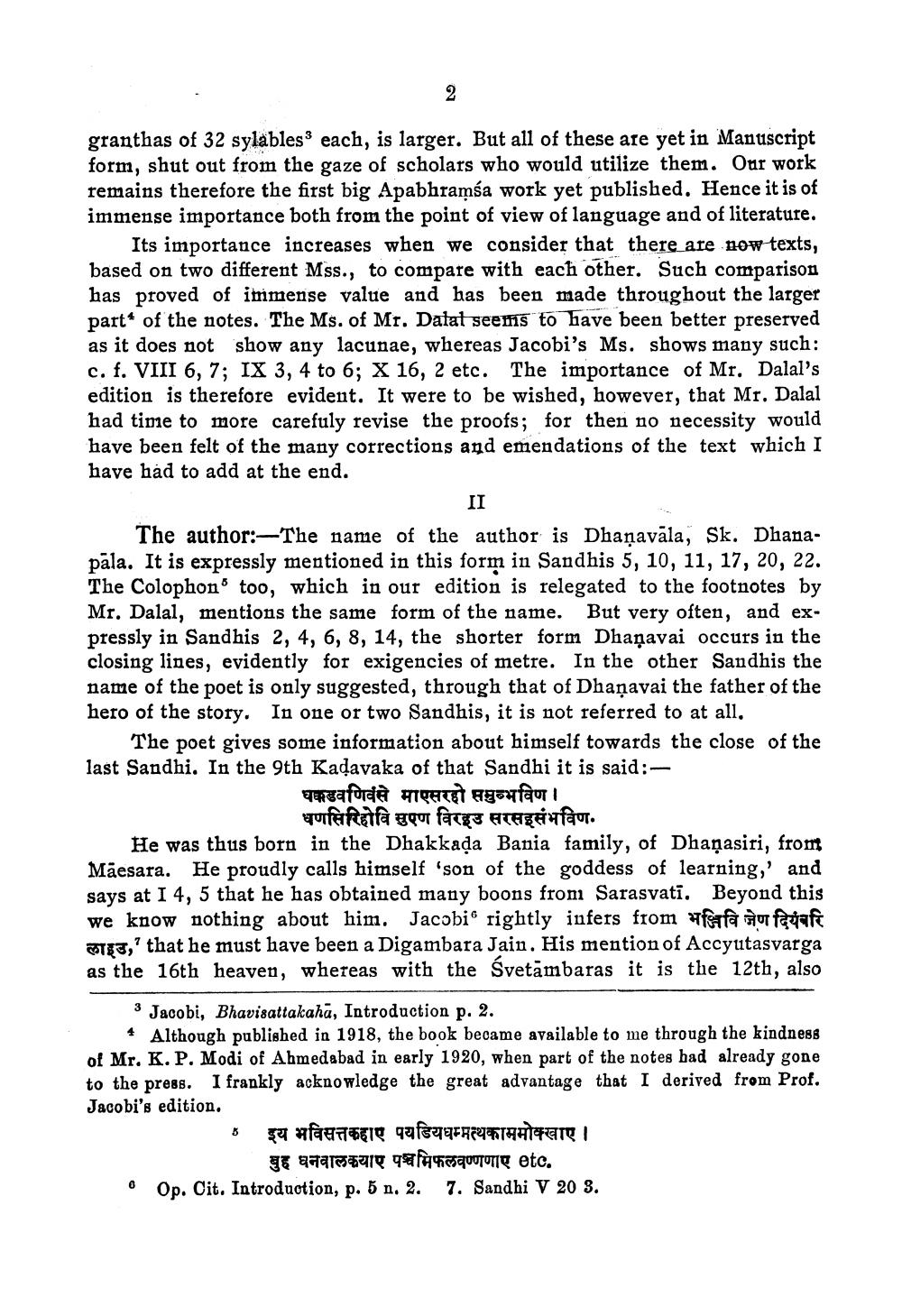________________
2
granthas of 32 sylables each, is larger. But all of these are yet in Manuscript form, shut out from the gaze of scholars who would utilize them. Our work remains therefore the first big Apabhramsa work yet published. Hence it is of immense importance both from the point of view of language and of literature.
Its importance increases when we consider that there are now texts, based on two different Mss., to compare with each other. Such comparison has proved of immense value and has been made throughout the larger part of the notes. The Ms. of Mr. Dalat seems to have been better preserved as it does not show any lacunae, whereas Jacobi's Ms. shows many such: c. f. VIII 6, 7; IX 3, 4 to 6; X 16, 2 etc. The importance of Mr. Dalal's edition is therefore evident. It were to be wished, however, that Mr. Dalal had time to more carefuly revise the proofs; for then no necessity would have been felt of the many corrections and emendations of the text which I have had to add at the end.
II
The author:-The name of the author is Dhaṇavala, Sk. Dhanapāla. It is expressly mentioned in this form in Sandhis 5, 10, 11, 17, 20, 22. The Colophon too, which in our edition is relegated to the footnotes by Mr. Dalal, mentions the same form of the name. But very often, and expressly in Sandhis 2, 4, 6, 8, 14, the shorter form Dhanavai occurs in the closing lines, evidently for exigencies of metre. In the other Sandhis the name of the poet is only suggested, through that of Dhanavai the father of the hero of the story. In one or two Sandhis, it is not referred to at all.
The poet gives some information about himself towards the close of the last Sandhi. In the 9th Kadavaka of that Sandhi it is said:
amcafordà angezet agenfầu | aufafafa your face aragenfar.
He was thus born in the Dhakkaḍa Bania family, of Dhaṇasiri, from Mäesara. He proudly calls himself 'son of the goddess of learning,' and says at I 4, 5 that he has obtained many boons from Sarasvati. Beyond this we know nothing about him. Jacobi rightly infers from fa faft
0
,' that he must have been a Digambara Jain. His mention of Accyutasvarga as the 16th heaven, whereas with the Svetambaras it is the 12th, also
3 Jacobi, Bhavisattakaha, Introduction p. 2.
Although published in 1918, the book became available to me through the kindness of Mr. K. P. Modi of Ahmedabad in early 1920, when part of the notes had already gone to the press. I frankly acknowledge the great advantage that I derived from Prof. Jacobi's edition.
5 इय भविसत्तकहाए पयडियधम्मत्थकाममोक्खाए । बुह धनवालकयाए पश्चमिफलवण्णणाए etc.
Op. Cit. Introduction, p. 5 n. 2. 7. Sandhi V 20 8.




